Smart Air Purifiers: How to Buy the Best Option for Your Home or Office
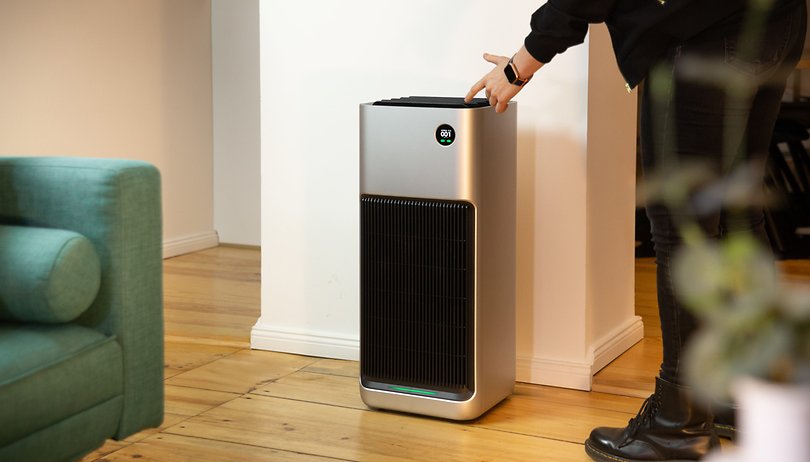

Which air purifier to choose in 2024? After testing several models from Dyson, Philips, Jya, and even Ikea, nextpit has selected for you the best smart air purifiers to buy in 2024. This buying guide also shows you how to choose the right model for your needs.
With air quality being important, especially in big cities, more and more people are using air purifiers to prevent allergies and even kill bacteria and viruses. In this buying guide, we introduce you to some of the most popular models on the market and explain the important features you need to know.
This way, you'll know everything you need to know about the HEPA filter, CADR cover, PM2.5 particle sensors, and more to choose your connected air purifier properly.
- Pick the right air conditioner unit for your house or office
- Complement your cleaning duties with a robot vacuum cleaner
- Want to automate your house lighting? Check the Hue lineup
| Smart air purifiers compared | ||||||
|---|---|---|---|---|---|---|
| Product | Dyson PH04 | Xiaomi Smart Air Purifier 4 | Xiaomi Smart Air Purifier 3H | Phillips 3000i | Ikea Starkvind table | Ikea Starkvind |
| Picture | 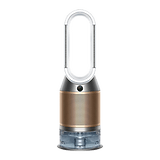 |
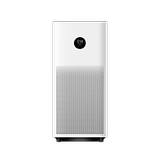 |
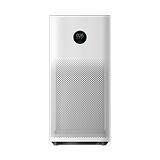 |
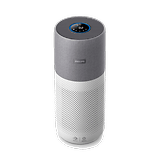 |
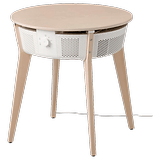 |
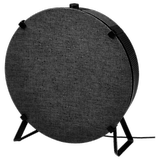 |
| Review |
|
Not yet rated
|
Not yet rated
|
|
Not yet rated
|
|
| Filtration method |
|
|
|
|
|
|
| Recommended area |
|
|
|
|
|
|
| Filtration rate |
|
|
|
|
|
|
| Sensors |
|
|
|
|
|
|
| Filter lifetime / price |
|
|
|
|
|
|
| Power consumption |
|
|
|
|
|
|
| Noise level |
|
|
|
|
|
|
| Amazon Alexa |
|
|
|
|
|
|
| Apple HomeKit |
|
|
|
|
|
|
| Google Assistant |
|
|
|
|
|
|
| Other ecosystems |
|
|
|
|
|
|
| Dimensions (W x D x H) |
|
|
|
|
|
|
| Weight | 8,29 kg | 9.3 kg (20 lb 11 oz) | 7.57 kg (16 lb 13 oz) | 6.8 kg (15 lb) | 4.8 kg (10.6 lb) | 4.6 kg (10.1 lb) |
| Offers* | ||||||
Why choose a smart air purifier instead of a regular one
Air purifiers are appliances that are not necessary 24h per day for most people, and some may even require them for short periods of time during specific months of the year. In those cases, it might be worth considering buying a smart model.
Armed with sensors and with the option of being controlled by a mobile app, smart air purifiers can be set to function only when the pollutants levels are harmful or when there are people in the house or room, potentially saving power.
Sensor types
One of the must-have features of a smart air purifier is an array of sensors to automatically detect the level of pollutants, and adjust the fan accordingly. Sensor data can also be sent to an accompanying app, where you can check for air quality.
Air purifier applications can not only report the overall quality of air, but also display statistics, historical data, forecasts, and present the status of the different kinds of pollutants:
- NO2 — nitrogen dioxide — gas produced by burning fossil fuels (vehicles, power plants, etc).
- PM1.0 — particulate matter up to 1 μm — 50x smaller than the diameter of a human hair.
- PM2.5 — fine particles, smaller than 2.5 μm — metals, organic compounds, combustion smoke.
- PM10 — inhalable particles, smaller than 10 μm — pollen, spores, mold, dust.
- VOCs — volatile organic compounds — responsible for odors (good or bad), are produced by things such as paints, or incomplete combustion.
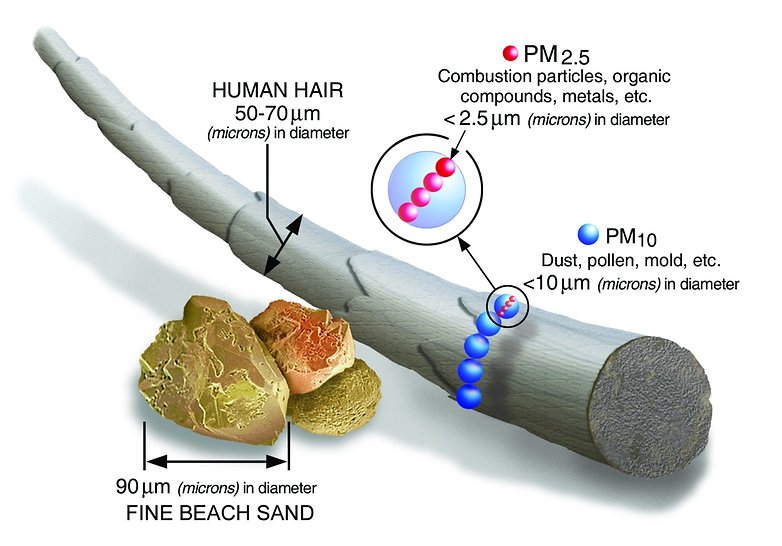
Smart-home compatibility
Another feature of smart air purifiers is their compatibility with smart home ecosystems and voice assistants. Depending on the model, the device can be integrated into defined schedules—turn on filtering before sleeping when the lights dim, turn it off in the morning when the curtains go up, etc.
One thing to look forward to in the future is compatibility with the Matter smart home standard, which promises to simplify control and integration between devices. Apple, Amazon, Google, Oppo, Samsung, Ikea, Signify, Tuya, and other heavyweights are among Matter supporters.
The Matter standard was launched in October 2022, but the first release doesn't have support for air purifiers. The CSA (Connectivity Standards Alliance, the group responsible for the standard) however, already hinted at new product categories for future releases.
Another thing that many smart air purifiers offer is an accompanying app that can be used to remote control, monitor air quality, adjust fan speed and noise, and also set reminders for buying new filters.
Different types of filters found in air purifiers
HEPA filters
HEPA is a type of air filter that can remove at least 99.95% of dust particles, bacteria, pollen, mold, and other airborne particles between 0.3 and 10 micrometers (µm) in diameter.
Sometimes, manufacturers will report an additional number, known as the efficiency rating. In general HEPA filters are classified as either H13 or H14 in the European Union, with the latter defining filters capable of retaining more than 99.995% of particles within that size range.
Other companies advertise products with terms like “HEPA-like/type/style” or “99% HEPA”, but that is basically a meaningless classification for filters that do not pass the HEPA requirements, or at best haven’t been properly tested.
Activated Carbon
Besides removing particulate matter from the air we breathe, some filters also promise to remove odors and gases. That can be done using an activated carbon filter, capable of removing VOCs, odors, and gases, such as NO2.
Also called charcoal filters, they are made using a porous material, and work using a process called adsorption—in which the pollutant stick to the carbon molecules, but does not get absorbed.
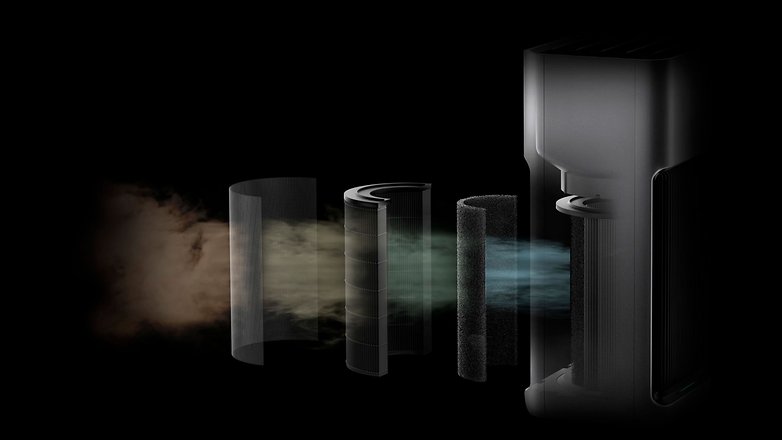
Ionizers
Ionizer filters work by charging the room particles to make them easier to attract and capture by the filter or make them fall to the ground. While it may help with smoke particles, for example, the feature liberates ozone as a byproduct, which depending on the level produced can cause lung irritation.
UV light
Some air purifiers also include a UV light to destroy pollutants. Also called ultraviolet germicidal irradiation (UVGI), the feature tries to destroy biological matter, like bacteria, mold, and viruses by damaging their cell structure or protein shell, even inactivating some viruses.
Room size coverage and CADR
Keep in mind which room(s) you expect to use the air filter on and compare the overall room volume with the manufacturer’s recommendation. Some models list the American standard CADR (clean air delivery rate) which notes the cubic feet of air per minute (CFM) filtered in a 1000 ft³ (28.5 m³) room.
Depending on the region, air purifiers are advertised with their filtering rate in cubic meters per hour (m³/h) or CFM. Note that the value shown is the maximum offered by the device, and features like “silent mode”, “night mode”, or power-saving options will lower the filtering rate.
Hidden costs: filter replacements
One often overlooked detail when shopping for an air purifier is the filter cost. Expect to change filters once or twice a year, with many models notifying when it is time to replace the filter—some even allow customers to order a replacement from the companion app.
Filter costs are usually proportional to the capabilities—particulate/HEPA filter and/or activated carbon—, and some companies even sell the different components separately like Ikea, with the particulate and activated carbon filters sold on their own for the Starkvind models.
Also, similar to what happens with coffee pods, replacement filters for bigger brands are usually easier to find than components for some niche companies only found on the Amazon marketplace. Some of the most popular models even have third-party filters available, but be aware that their usage may void the device warranty!
The best smart air purifiers
Editor's pick: Dyson PH04 Purifier Humidify+Cool Formaldehyde Humidifier
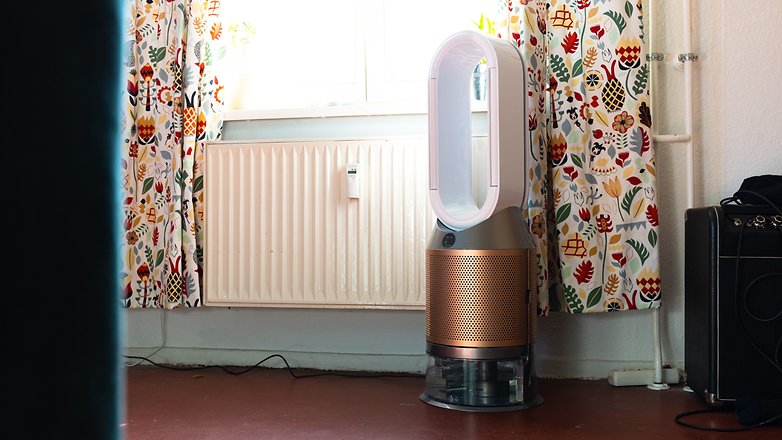
Dyson PH04 full review on nextpit
The Dyson PH04 is a high-end connected air purifier from Dyson, priced at $1000. It features a humidification function and offers extremely effective air purification thanks to its infrared chamber and HEPA H13 filter. Its rotorless design allows precise control of air flow, with 90° rotation and 180° inversion.
The PH04 can be controlled via an app and is compatible with Alexa, Siri, and Google Home. The purifier offers exceptional filtration performance, eliminating fine particles, bacteria, viruses, and even formaldehyde. It also features a built-in humidifier. The comprehensive companion app enables you to control all the purifier's functions.
However, sensor data cannot be used for automation, and the Dyson PH04 is not Matter-compatible.
Nevertheless, the Dyson PH04 offers excellent air filtration quality and numerous features for the connected home. It's a recommended choice for those who want to optimally improve the air quality in their home.
Good
- Extremely powerful air purification with an infrared chamber
- Wide range of smart home functions including a top-notch app
- Airflow can be controlled precisely
- Built-in humidifier
Bad
- Very expensive
- Rather heavy (8.29 kilograms)
- Quite loud
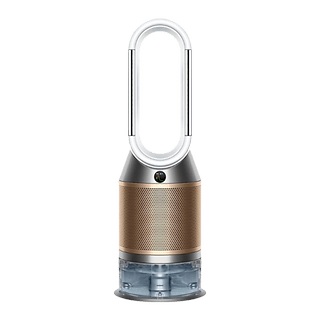
The best low-cost connected air purifier: Xiaomi Smart Air Purifier
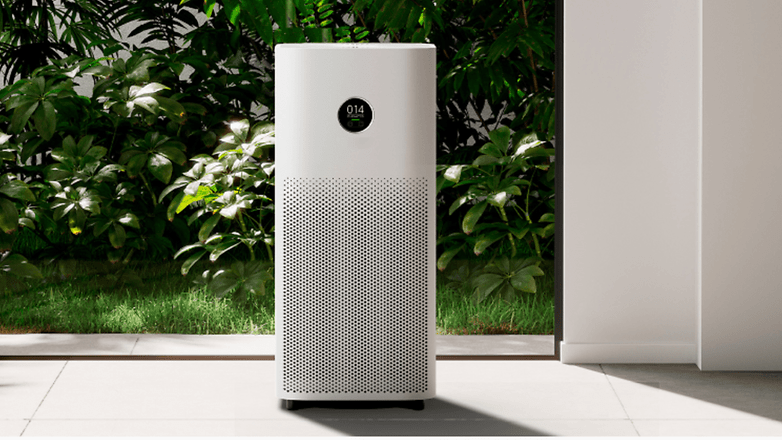
The Xiaomi Smart Air Purifier 3H is an inexpensive air purifier that has it all. First and foremost, it stands out for its sober, elegant design. It then offers good purification performance with a block that contains a HEPA filter, an activated carbon filter, and a pre-filter. The manufacturer claims that it can filter particles down to 0.3 microns, in rooms up to 45 sq. m. It can also release negative ions to refresh the room.
In addition to its compatibility with Google Home and Amazon Alexa, the Smart Air Purifier can be controlled via the Mi Home app, which provides a range of information on air quality, such as room temperature, humidity level, filter status, and the level of fine particles present in the room.
On the downside, Xiaomi's purifier is rather imposing. It can sometimes reach a fairly high noise level when placed in a bedroom.
What did you think about this overview of smart air purifiers? Do you use one? What are the most important features for you? Share your opinion in the comments below.
Article updated in April 2024 with review notes.








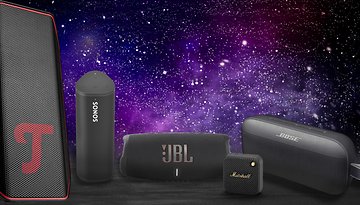


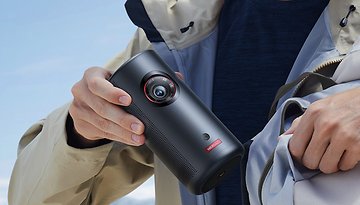

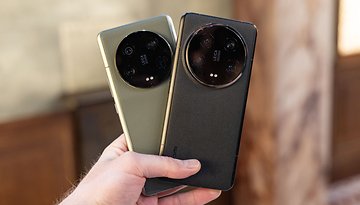
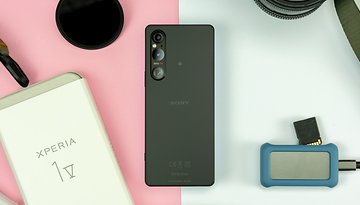



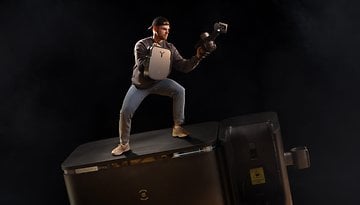
Recommended editorial content
With your consent, external content is loaded here.
By clicking on the button above, you agree that external content may be displayed to you. Personal data may be transmitted to third-party providers in the process. You can find more information about this in our Privacy Policy.